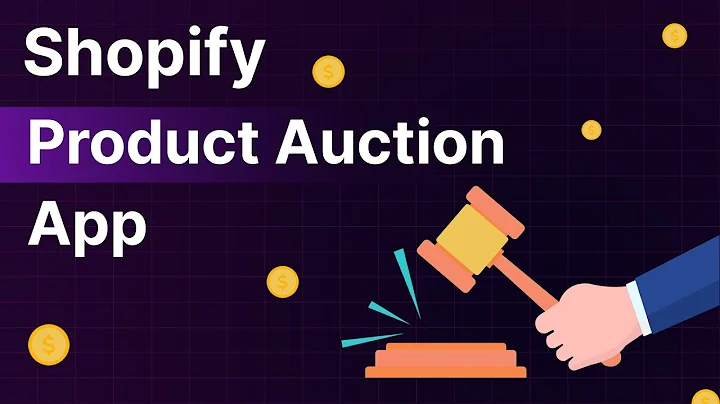Boost Your Sales with Abandoned Cart Automation
Table of Contents:
- Introduction
- The Importance of Abandoned Cart Automation
- Setting Up Abandoned Cart Flow in Klaviyo
3.1 Logging into Klaviyo
3.2 Choosing the Prebuilt Flow
3.3 Creating the Flow
- Understanding the Checkout Started Trigger
- Setting Delay for the Abandoned Cart Flow
- Importance of Checking the Shopify Integration
- Understanding Reasons for Cart Abandonment
7.1 Higher Cost Than Expected
7.2 Checkout Process Complexity
- Focus on Addressing the Most Common Reason for Abandonment
- Tips for Creating an Effective First Email
9.1 Reminder without Discounts or Offers
9.2 Personalizing the Subject Line and Preview Text
- Adding Dynamic Product Information to the Email
- Optimizing the Email with Checkout Links
- Customizing the Email Template and Dynamic Block
- Tips for Rebuilding the Dynamic Block
- Conclusion
Setting Up Abandoned Cart Flow in Klaviyo
Abandoned carts can be a major concern for e-commerce businesses. Did you know that approximately 7 out of 10 customers abandon their carts? This number rises even higher to about 9 out of 10 on mobile devices. Losing such a significant percentage of potential customers can have a huge impact on your sales. Luckily, the solution lies in abandoned cart automation. By setting up an abandoned cart flow in Klaviyo, you can effectively win back those customers and boost your conversions.
To begin setting up an abandoned cart flow in Klaviyo, the first step is to log into your Klaviyo account. Once logged in, navigate to the flows section. Here, you have the option to create a new flow or choose an existing prebuilt flow. It is highly recommended to pick the prebuilt flow as it saves you time and allows for easier customization.
After selecting the prebuilt flow, give it a name and set the trigger to "Checkout Started." This trigger ensures that the flow starts when a customer begins the checkout process. The next step is to add a filter for the "Placed Order" event. By adding this filter with a condition of "Zero Times," you ensure that customers who make a purchase within the next four hours will not receive the abandoned cart emails.
When it comes to setting the delay for the abandoned cart flow, it is essential to consider the nature of your products. If you sell high-value items like fancy shoes or furniture, a longer delay may be suitable. For lower-priced items like t-shirts, a shorter delay of one to four hours is typical. However, it is advisable to check the Shopify integration settings to determine the most appropriate delay for your store. Different platforms may have varying default delay settings.
One of the primary reasons customers abandon their carts is unexpected additional costs. It's crucial to address this concern in your abandoned cart flow. Customers may put an item in their cart expecting it to cost a certain amount, only to discover higher costs during the checkout process. To overcome this issue, consider offering incentives like free shipping or discounts to make the final cost align with their expectations.
When crafting the first email for the abandoned cart flow, it is recommended to avoid including any discounts or offers. Instead, focus on reminding customers about the items they left in their carts. Personalize the subject line and preview text to grab their attention and create a sense of urgency. Use dynamic codes to add the exact name of the product they abandoned in their cart, making the email more relevant and personalized.
In addition to personalization, optimizing the email with checkout links is crucial for improving conversion rates. Include the checkout link in the logo, image, and call to action to make it easy for customers to return to their abandoned carts. Redirecting customers to their carts rather than the homepage increases the likelihood of them completing their purchase.
Customizing the email template and the dynamic block is an essential step in creating an effective abandoned cart flow. Klaviyo provides prebuilt dynamic blocks that automatically adjust based on the number of products in a customer's cart. These dynamic blocks can be modified to include product title, item quantity, and price information. However, it is recommended to use the existing prebuilt dynamic blocks provided by Klaviyo for optimal results.
Rebuilding the dynamic block to suit your needs is possible, but it is recommended to use the prebuilt options as they are designed to handle multiple products in a cart seamlessly. By personalizing the email and optimizing the dynamic block, you can deliver a compelling message to prompt customers to revisit their abandoned carts and complete their purchases.
In conclusion, setting up an abandoned cart flow in Klaviyo is a vital step for any e-commerce business looking to recover lost sales. By following the steps outlined in this guide and implementing the recommended tips and tricks, you can create an effective abandoned cart automation strategy that increases conversions and maximizes revenue.
Pros:
- Recover lost sales by targeting customers who have abandoned their carts
- Personalize emails with dynamic product information to increase relevance
- Optimize the email template and dynamic block for improved conversion rates
- Use checkout links to direct customers back to their abandoned carts
Cons:
- Requires initial setup and ongoing monitoring to ensure effectiveness
- May need to experiment with different strategies to find the most effective approach






















